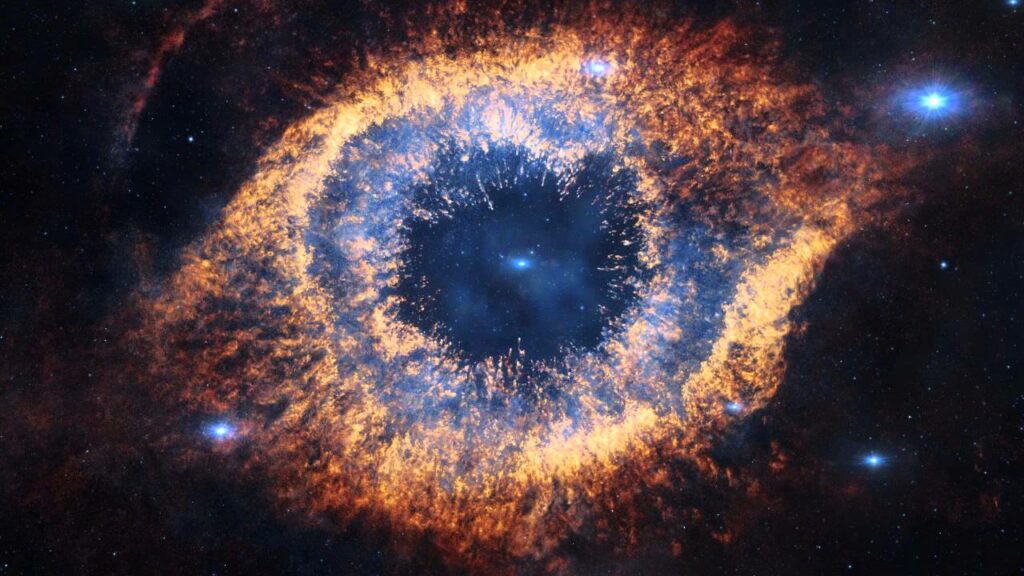What is the Theory of Evolution?
The theory of Evolution teaches that the first living organism developed from the non-living matter. Then, as it reproduced, it is said to have changed into different kinds of living beings, producing ultimately all forms of life that have ever existed on earth, including humans. And all of this is believed to have been accomplished without intelligent direction.
Creation as opposed to evolution is the conclusion that the appearing of living things can only be explained by the existence of an Almighty who designed and made the universe and all the basic kinds of life in it.
In this article, we will study the scientific possibility of life emerging from inert matter. We will also analyze whether simple living beings actually evolved into all the complex variety of species seen today and specifically whether apes evolved into humans.
Dilemmas over Origin of Life
Explaining how lifeless chemicals suddenly came alive has been a formidable problem for all evolutionists. When Charles Darwin advanced his theory of evolution he conceded that life may have been “originally breathed by the creator into a few forms or into one”. But present-day evolutionary theory generally eliminates any mention of a Creator. Instead, the theory of the spontaneous generation of life, once repudiated, has been revived in a somewhat altered form.
Belief in a form of spontaneous generation can be traced back for centuries. In the 17th century even respected men of science, including Francis Bacon and William Harvey, accepted the theory. However by the 19th century Louis Pasteur and other scientists had seemingly dealt it a deathblow having proved by experiments that life comes only from previous life. Nevertheless, out of necessity, evolutionary theory assumes that long ago microscopic life must somehow have arisen spontaneously from nonliving matter. Let us see how this is supposed to have happened.
The Theory of Spontaneous Generation
In his book, ‘The Selfish Gene’, Richard Dawkins speculates that in the beginning, the Earth had an atmosphere composed of carbon dioxide, methane, ammonia and water. Through energy supplied by sunlight, and perhaps by lightning and exploding volcanoes, these simple compounds were broken apart and then they reformed into amino acids, accumulated in the sea and combined into protein-like compounds. Ultimately, he says, the ocean became the “organic soup,” but still lifeless.
Then according to Dawkins’ description, “a particularly remarkable molecule was formed by an accident” – a molecule that had the ability to produce itself. Though admitting that such an accident was exceedingly improbable, he maintains that it must nevertheless have happened. Similar molecules clustered together, and then, again by exceedingly improbable accident, they wrapped a protective barrier of other protein molecules around themselves as membrane. Thus it is claimed, the first living cell generated itself.
At this point a reader may begin to understand Dawkins comment in the preface to his book: “This book should be read almost as though it were science fiction.” But readers on the subject will find that his approach is not unique. Most other books on evolution also skim over the staggering problem of explaining the emergence of life from nonliving matter.
The recent explosive increase of knowledge has only served to magnify the gulf between nonliving and living things. Even the oldest known single-celled organisms have been found to be incomprehensibly complex.
Nevertheless let us analyze the possibility of the occurrence of the events as proposed by the spontaneous generation theory.
The principal steps involved are:
(1) Presence of the right primitive atmosphere
(2) Formation of an ‘organic soup’ i.e., concentration in the oceans of ‘simple’ molecules necessary for life
(3) Emergence of proteins and nucleotides in the soup
(4) Combination of these and acquiring of a membrane to form a cell
(5) Development of a genetic code and replication. Are these steps possible?
Problem I : The Primitive Atmosphere – Was oxygen present in the earth’s primitive atmosphere?
Explanation: With oxygen present, simple compounds (originally present in the primitive atmosphere) wouldn’t combine to form amino acids. Without oxygen, the amino acids formed would be immediately decomposed by the cosmic rays.
Solution: Oxygen is clearly necessary for amino acids to be preserved for the next stage I spontaneous generation of life, yet the presence of oxygen prevents the formation of amino acids. There is no solution to this problem!
Problem II: Was energy (supplied by sunlight or lightning or volcanoes) present or not?
Explanation: If energy was not present, simple compounds would not have split and no formation of amino acids would take place. If energy was present, that energy would immediately decompose any amino acids formed into simpler compounds.
Solution: Amino acids just can’t be formed without energy and with energy they can’t survive. There is no way spontaneous generation can proceed beyond this stage.
To be continued in the next article ….
Source: The Origin of Species – Charles Darwin, The Selfish Gene – Richard Dawkin, Pasteur’s experiment – http://www-plb.ucdavis.edu/courses/bis/2a/bis2a-f11/pasteurexperiment.pdf


Awesome post! Keep up the great work! 🙂
I have read so many posts about the blogger lovers however this post is really a good piece of writing, keep it up